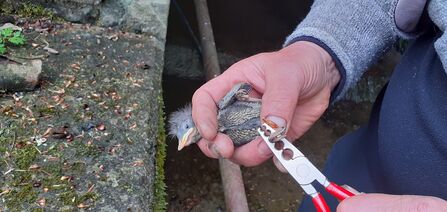Hi, I’m Sue, the new rivers trainee for Radnorshire Wildlife Trust.
I’ve been spending time here in Mid Wales since I was a child and we’ve had many happy family holidays on a farm near Newbridge-on-Wye.
Since I’ve been living close to the river Wye, my passion for the river, and the creatures that depend on it, has continued to grow. By the time I came to live here, I was already a keen nature photographer, with a special interest in kingfishers. I started to spend a lot of time on the riverbank with my camera. In January 2022, I photographed a dipper and noticed that the bird was ringed. I sent the ring details to the British Trust for Ornithology (BTO) and received an email with details of when and where the bird was ringed. It turns out that the bird was a female who had been ringed on my birthday, over 3 years ago. The dippers in this area are part of an ongoing study project, which started monitoring dippers here in 1978, providing valuable data on survival, breeding and movements of the birds.



